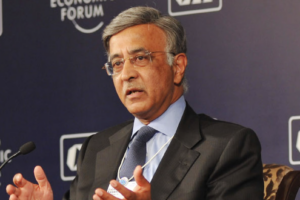
On February 7, the Reserve Bank of India (RBI) lowered the repo rate by 0.25 percentage points to 6.25 percent. The repo rate is the rate at which banks borrow from the RBI. There may be higher chances of more cuts in the coming months if inflation will be within permissible limits.
The central bank appears to have given a bullish stance about the prospects in the real sector. It has marginally reduced its 2019-20 GDP growth forecast to 7.4 percent from 7.5 percent earlier, while showing investment revival signs.
It may bring down EMIs for the millions of home loan borrowers as well cut capital raising costs for corporates. Banks are expected to pass on the reduced rates to its customers.
The RBI also introduced a new way of tackling floating loan charges—a landmark move that may force banks to change home loan rates to sync with the RBI’s repo rate or government bond yields move.
The RBI also announced a tonne of regulatory changes . This includes raising the limit of collateral free bank loans for farmers to Rs 1.6 lakh from Rs 1 lakh as of now.
Banks also have the liberty to offer interest rates to bulk deposits, raising the definition of “bulk deposits” to Rs 2 crore from Rs 1 crore currently.
It is also reported that the RBI’s primary focus will be on growth as opposed to inflation which is seeing stable levels. However, the industrial sector and the rural economy have posed a concern.
Rabi crop sowing so far (up to February 1, 2019) is less than last year but the overall shortfall of 4 percent across various crops is expected to increase.
Headline inflation continue at a level of 4 percent. Consumer price inflation (CPI) the price index that is used to gauge interest rate decisions, will be around 3.2-3.4 percent during April-September 2019. This has reflected the current low inflation levels and stable food price outlook.
India’s retail inflation hit an 18-month low of 2.19 percent in December because of cheaper food items.
Crude oil prices have also been steady. This could lower headline inflation rate even further. RBI may also be in a better position to lower lending rates, in turn bringing down borrowing costs for individuals and corporate houses.
The RBI said they would need to monitor issues like volatile vegetable prices, uncertainty in crude oil prices, global trade tensions, rise in health and education prices, volatility in financial markets, untimely rain in the coming summer months and its impact on food prices, and lastly, the union budget proposals’ effect on the real sector.
The RBI statement said that while inflation excluding food and rule remains elevated, the recent unusual pick-up in the prices of health and education could be a one-off phenomenon.
There has been a lot of expectations of inflation and price changes among investors and households in the coming months. These will softened by 80 basis points for the next three months and by 130 points in the next 12 months,as per RBI’s latest survey in December 2018.
The RBI has also added that inflation in the prices of farm inputs and industrial raw materials will remain elevated, despite a little softening. Growth in rural wages had also moderated in October.
It was a unanimous decision to change the monetary policy stand. Among the MPC members, Ravindra H. Dholakia, Pami Dua, Michael Debabrata Patra and Das voted in favour of a repo rate cut. Chetan Ghate and Viral V Acharya voted to keep the policy rate unchanged.



